Gallery: Space Junk Cleanup by CleanSpace One Satellite
CleanSpace One
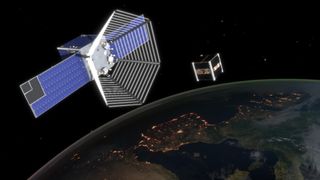
CleanSpace One closes in on a CubeSat.
Space Debris 'Pac-Man' Solution

An approach and capture system – a so-called “Pac-Man” solution.
SwissCube-1

SwissCube-1.
CleanSpace One Satellite Chases Its Target

CleanSpace One is chasing its target, one of the CubeSats launched by Switzerland in 2009 (Swisscube-1) or 2010 (TIsat-1). Image released Feb. 15, 2012.
CleanSpace One's Gripping Mechanism
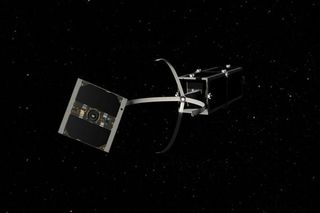
Just before reaching its target, CleanSpace One unfolds its bio-inspired gripping mechanism.
CleanSpace One Attached to Space Debris
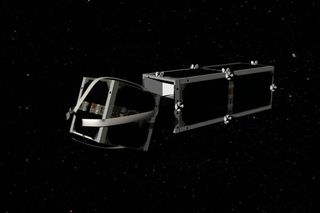
Firmly attached to the debris, CleanSpace One will now power on its engines in order to reach the Earth atmosphere. Both satellites will be burnt during their descent. Image released Feb. 15, 2012.
CleanSpace One Infographic
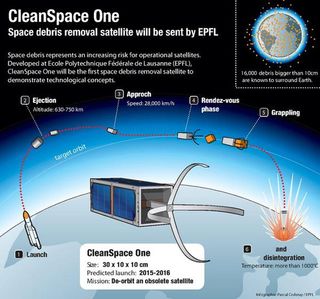
CleanSpace One will remove space debris.
Get the Space.com Newsletter
Breaking space news, the latest updates on rocket launches, skywatching events and more!
Space Junk in Orbit
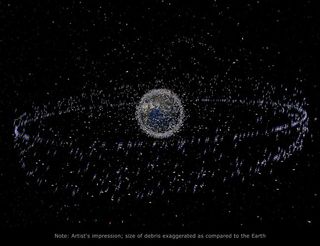
This graphic depicts the trackable objects, satellites and space junk, in orbit around Earth.
Space Junk Problem Detailed

Each dot represents a bit of known space junk that's at least 4 inches (10 cm) in low-Earth orbit, where the space station and shuttles roam. In total, some 19,000 manmade objects this size or bigger orbit Earth as of July 2009; most are in low-Earth orbit. Countless smaller objects are also circling the planet.
Illustration of a Space Debris Field

Illustration of a space debris field as depicted in the film "Space Junk 3D."
Iridium/Cosmos Satellite Collision
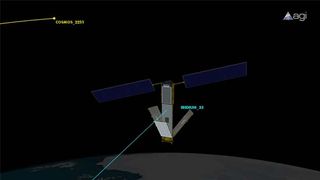
The Iridium 33 and Cosmos 2251 communications satellites collided over northern Siberia. The impact between the Iridium Satellite and the 16-year-old satellite launched by the Russian government occurred in February 2009.
Join our Space Forums to keep talking space on the latest missions, night sky and more! And if you have a news tip, correction or comment, let us know at: community@space.com.

Space.com is the premier source of space exploration, innovation and astronomy news, chronicling (and celebrating) humanity's ongoing expansion across the final frontier. Originally founded in 1999, Space.com is, and always has been, the passion of writers and editors who are space fans and also trained journalists. Our current news team consists of Editor-in-Chief Tariq Malik; Editor Hanneke Weitering, Senior Space Writer Mike Wall; Senior Writer Meghan Bartels; Senior Writer Chelsea Gohd, Senior Writer Tereza Pultarova and Staff Writer Alexander Cox, focusing on e-commerce. Senior Producer Steve Spaleta oversees our space videos, with Diana Whitcroft as our Social Media Editor.
